Tiny Sony Cyber-Shot DSC-W330 Digital Camera Impressive At $169.99 -- ‘Book Mystique Review
Wednesday, April 28, 2010
by Charles W. Moore
Digital cameras are of a gadget class that I’m only inclined to replace when I absolutely have to. Like computers, the technology is constantly improving, but unlike computers, cameras are not a primary tool of my trade, so I’m inclined to the view that good enough is good enough, and I’ll stick with what I’ve got as long as he keeps working.
At one time, photography was one of my main hobbies, and for an interval also my livelihood when I made my living as a wedding and portrait photographer in the ‘70s. I had a high-end 35mm SLR with a selection of standard, wide-angle, and telephoto zoom lenses, and a medium-format 6X6cm Rollei twin lens reflex that I liked even better, plus a darkroom in my house.
However, today I don’t have the spare time for much hobby photography, and in the era of digital imaging, I use a camera for essentially two purposes — family snapshots and taking product shots for review illustrations.
The digital camera I’ve been using for the past six years wasn’t exactly state-of-the-art when I got it in 2004, but with 3.1 megapixel resolution, the Concord Eye-Q 3040 AF has proved adequate (albeit barely sometimes lately) for my requirements, pleasant to use with intuitive and ergonomically logical controls, its use of inexpensive standard AA alkaline, NiCad, or NiMH rechargeable batteries, and SD/MMC Cards, and it also proved admirably reliable. That said, it has limitations, notably its fixed focal length (it has 4x “digital zoom”) 9.0 mm f/2.8 glass lens that can be kindly described as mediocre – at least compared with the superb lenses — Japanese and German — in my film cameras. Nevertheless, I would have happily kept using the Concord for some time yet.
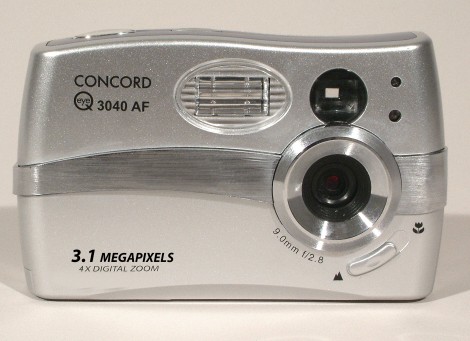
As an aside, my 36-year-old Olympus OM 1 SLR still takes as beautiful images as it did in 1974, and ditto for my Rolleicord VB TLR with its ultra-sharp Schneider Xenar lens. For that matter, a Rollei, Contax, or Leica from the 1930s, or a Nikon F or Pentax Spotmatic from the 1960s can still match or exceed modern film cameras for image quality. That’s one of the things that bugs me about electronic technologies. They’re ephemeral, with such rapid obsolescence. I digress.
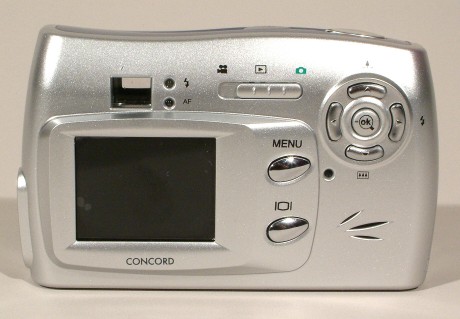
Anyway, last month Butterfingers dropped the Concord on a hardwood floor. At first it appeared to be dead, but by tapping and thumping a bit (hair of the dog that bit it?) I managed to bring it back to life and it continued working, albeit with some performance flakiness, for a few more weeks. In late March though it finally croaked again. By beating it on my workbench I woke it up for long enough to retrieve the images on its memory card, but that was it. Especially since during the beating I managed to break off the battery compartment cover and had to stick it back together with duct tape. Clearly it was time for a new camera.
Happily, I’ve been collecting points on my affinity Sony/MBNA MasterCard since about the time I got the Concord, and a points check determined that I had amassed enough points to pay for an entry-level Sony Cyber-Shot DSC-W310, with only the need to kick in nine bucks extra to top up tax and shipping charges.
The W310 would’ve been entirely adequate for my purposes, with approximately 12.1 effective megapixels and an f/3.0-5.8, 28-112 mm (35mm camera equivalents) 4x optical zoom lens, but that is a “house brand” Sony lens, and while I don’t doubt that it’s probably very good, many magnitudes superior to the lens in my old Concord, I’m still a bit of a lens snob with a particular affinity for German lenses, and for about $40 more I could upgrade to the Sony Cyber-Shot C330 with a 6 elements in 5 groups 4.7 - 18.8mm (26 -105mm in 35mm film camera equivalents) f/2.7-5.7 Carl Zeiss Vario-Tessar 4X optical zoom lens. Zeiss Tessar is a lens name dating back to the golden age of small-format film photography.
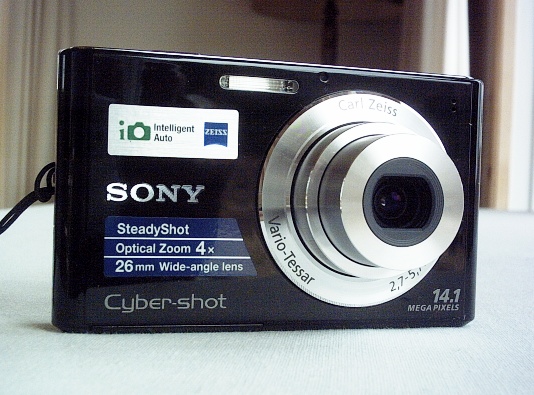
That lens, along with other spec. enhancements that came with the C330, like its slightly higher 14.1 effective megapixels that support up to 4,320 x 3,240 pixel resolution, iAuto which recognizes scenes, lighting conditions and faces -- automatically adjusting settings, SteadyShot image stabilization that compensates for camera shake, helping prevent blur through use of digital processing technologies, sensitivity-adjustable “Smile Shutter” technology (press the Smile Shutter button and when your subject smiles, the photo is taken), Face Detection technology that detects up to eight individual faces, in-camera retouching that lets you perform basic image-editing such as cropping and red eye correction in-camera, and a larger 3” display, made the modest extra up front outlay seem reasonable and proved ultimately irresistible.
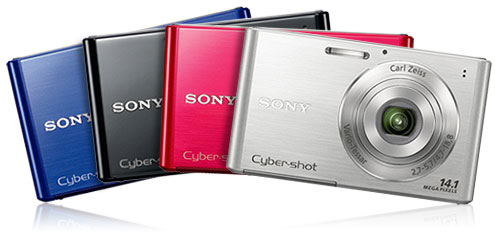
The remaining choice to make was color — the C330 is available in silver, black, blue, and red. Since its styling puts me in mind a bit of the classic German Leica and Contax rangefinder 35mm cameras of 70-80 years ago, I decided to go with traditional black.
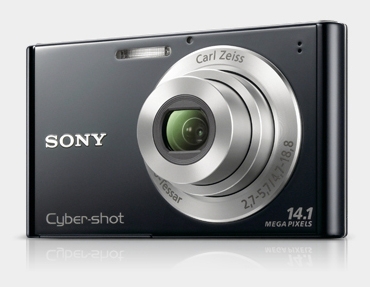
My initial impression of the Cyber-Shot when it arrived was how light and small it is — at 3.9” x 2.3” x 0.7” it’s genuinely pocketable or handbaggable, notwithstanding that its 3” digital monitor makes the much physically bulkier Concord’s tiny 1.6” display look like a thumbnail. It’s absolutely amazing how Sony has been able to engineer this rich and sophisticated a feature set into such a tiny package. This is a camera that you can literally take almost anywhere without inconvenience or hassle. My only concern is whether some ruggedness may have been sacrificed in the miniaturization, although that remains to be seen, and I hasten to add that the perceived build quality is absolutely excellent, without any hint of flimsiness or corner -cutting, despite the camera’s relatively modest $169.99 list price.
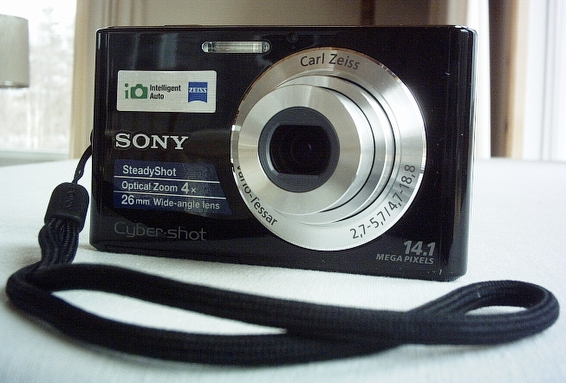
Personally, I find the C330’s specification, which also supports movie recording as well as still camera mode, more than adequate for my present or anticipated needs. However, if you want even more, Sony offers another step up in non-DSLR cameras with the $199.99 W350.
The C330 has a basic 28MB of internal memory and supports SD and SDHC cards as well as Sony’s proprietary Memory Stick expansion media, which live in a compartment shared with the non-standard rechargeable (a nice little battery charger is bundled with the unit) Lithium ion Sony NP-BN1 battery which has a CIPA rated life of approximately 220 minutes (roughly 4,40 shots) between recharges, which take 185 - 245 minutes from full discharge.
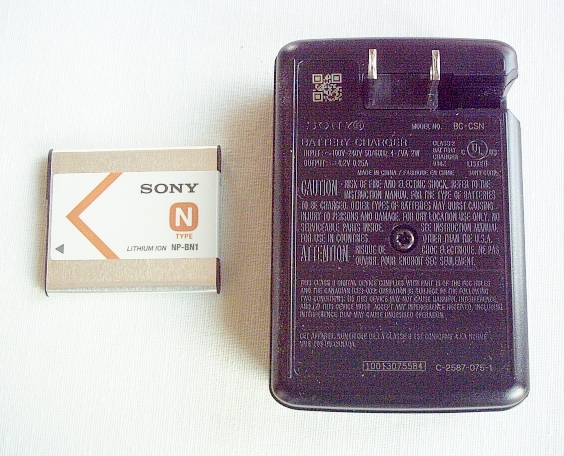
If you want to carry a spare battery, it’ll cost you about 50 bucks extra, and I still prefer support for standard A-series battery power, but in fairness I don’t think even two AAA cells could have been shoehorned into a package this slim and compact.
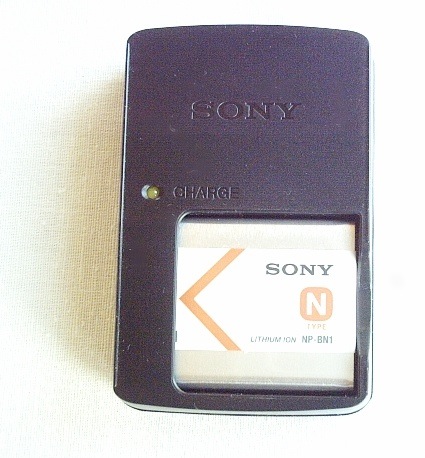
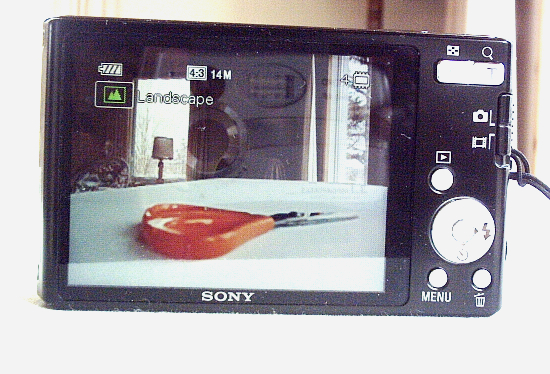
The Cyber-Shot C330 is easy to use, with its reasonably intuitive controls in pretty much standard locations for this class of camera, my only criticism being that they’re on the smallish side, which is unavoidable in a camera this compact, but may pose a bit of a challenge for users with large fingers. The zoom function is controlled by a conveniently-located rocker-switch, although I would prefer its response to be a bit slower, as you often find yourself having to “back and fill” a bit to get the desired composition, but it still works well. There’s an easily-accessed vertical slider switch for shifting between still and video modes. Video is limited to VGA quality and mono audio, and the lens’s optical zoom is not supported while recording movies.
ISO sensitivity (at full resolution) supports auto, 80, 100, 200, 400, 800, 1,600, and 3,200. You can set color balance for white balance auto, daylight, cloudy, fluorescent white, fluorescent natural white, fluorescent day white, incandescent, and flash, and autofocus modes supported include Multi AF, Center AF, Spot AF, Face Detection AF, with multi, center-weighted average, or spot light metering modes. An Easy mode makes default settings for all except image size (large or small options remain) and enlarges the onscreen text. There is also an astonishingly tiny built-in flash and a microphone on the camera’s front face.
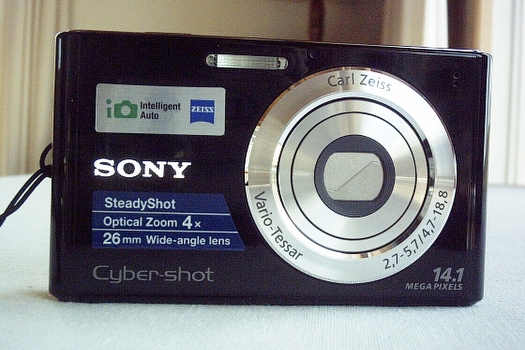
As is regrettably typical with virtually all consumer electronics these days, user manual documentation with the Cyber-Shot C330 is mediocre -- both the multi-language quickstart pamphlet that comes in the box, and the PDF format “Cyber-Shot Handbook” on the included CD-ROM not much more satisfying. Fortunately, most of the functions are fairly easy to decipher using the on-screen icons, menus, and prompts.
Included with the camera are the battery and charger unit, the USB connector cable, an A/V cable, a wrist strap, the CD-ROM containing application software and the PDF Cyber-Shot Handbook, and the quickstart pamphlet.
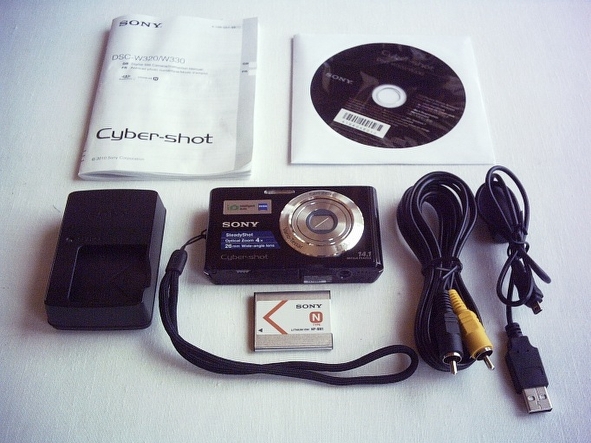
It’s early days yet, but so far I’m very pleased with the Cyber-Shot C330. Image quality is a quantum step up from the old Concord’s capabilities, and the much more diverse and flexible focusing range is a welcome convenience and versatility enhancer. The big, bright display makes composing and focusing a pleasure.
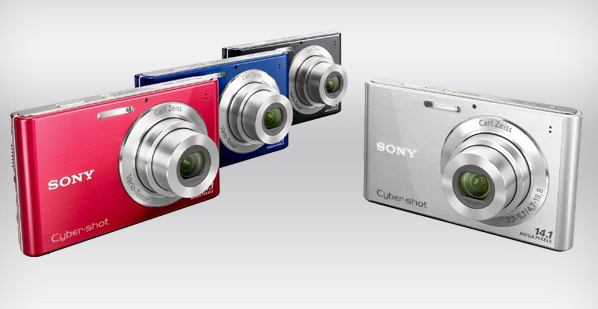
As previously noted, the most grievous aspect of digital camera technology is that you can’t stay even close to the cutting edge for very long, and even with its to me very impressive feature set, the C-330 has capability shortcomings compared with more expensive point-and-shoot stablemates, and of course the latest DSLRs. But these considerations are extremely relative, and compared with the old Concord unit it’s replacing for me, this camera is light-years more advanced and sophisticated, and of course there’s that Carl Zeiss Vario-Tessar lens. For the relatively modest price, I would rate the Cyber-Shot C330 an impressive value at $169.99, and I’m more than satisfied.
For more information, visit:
http://bit.ly/bZHJRM
Note: Letters to PowerBook Mystique Mailbag may or may not be published at the editor's discretion. Correspondents' email addresses will NOT be published unless the correspondent specifically requests publication. Letters may be edited for length and/or context.
Opinions expressed in postings to PowerBook Mystique MailBag are owned by the respective correspondents and not necessarily shared or endorsed by the Editor and/or PowerBook Central management.
If you would prefer that your message not appear in PowerBook Mystique Mailbag, we would still like to hear from you. Just clearly mark your message "NOT FOR PUBLICATION," and it will not be published.
CM